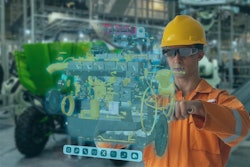
Warehouses are generally a hive of constant motion—especially due to the added supply chain pressures associated with the Coronavirus disease (COVID-19) pandemic. But, it shouldn’t be assumed that pests will steer clear just because humans are buzzing in and out while fulfilling orders. Commotion introduces conditions that pests will exploit as they prioritize their survival needs.
The best defense is to adopt an integrated pest management (IPM) plan that identifies vulnerable hotspots and helps develop maintenance practices to minimize risk. It’s always easier to manage pest pressures before they become reality, so start by mapping your location against this 15-point checklist:
It all starts outside
The first defense against pests is the exterior. Since pests mostly come from outside the facility, there are at least four key hotspots to monitor outdoors – trash collection sites, landscaping near the building, lighting adjacent to your structure and low spots in the parking lot or grassy areas.
1. Trashcans and dumpsters can be a pest paradise if they aren’t properly maintained. Follow a regular sanitation schedule that keeps trash from building up or overflowing. And, place dumpsters as far away from the building as possible, so that if pests hide out there, they will have a tougher time using it as an entry point to the facility.
2. Landscaping is designed to make your site more attractive, but it also can attract pests if not carefully considered and maintained. Fruit-bearing trees, sweet-smelling flowers, nuts and berries provide food resources for insects, rodents and birds. It’s best to regularly trim bushes and branches, so they are 3 feet away from the building and to discard fallen branches and foliage.
3. Exterior lighting can attract night-flying insects. Consider using sodium-vapor lights instead of fluorescent bulbs for any lights near doorways. To keep the pests at bay, program the lights to turn on 15 minutes before dusk.
4. Low spots and parking lots are places where water can pool after a hard rain or snow, providing a water source for pests. Monitor the grounds and plan to level any low areas. Also check the parking lot daily for discarded trash, which pests can use for food or nesting materials.
Patrol entry points
Receiving and shipping areas are obvious locations to watch, but do you also extend preventive measures to trucks and suppliers? Other spots are less obvious, but just as important, including the roof, ventilation intakes, catch basins, windows and doors.
5. Receiving and shipping areas should move like clockwork, but that isn’t always possible. Try to establish an incoming shipment schedule, so you can allot time and an isolated area for package inspection before bringing raw materials inside.
6. The same goes for the trucks of suppliers. It’s helpful to confirm that they follow the same preventive measures that you do and to inspect their trucks, so that pests can’t hitch a ride inside your warehouse during a delivery.
7. Ventilation intakes are a favorite spot for birds to perch and build their nests. Be sure to regularly inspect the roof and rooftop HVAC units for holes that could become roosting spots for birds.
8. Catch basins are common attractants for many types of pest. The key is to avoid standing water. Check these areas weekly for discarded waste and clutter, which can prevent standing water from draining.
9. Windows and doors are easy access points for pests. Keep windows closed or install screens if they need to be opened. Also, properly install air curtains in doorways so that unwanted pests are continuously pushed toward the exit.
Inside jobs
Routine exterior inspections and maintenance will go a long way to deter indoor infestations, but they still can happen if you don’t keep a close eye on interior hotspots. There are at least six problem areas that require regular attention -- floor drains, storage areas, equipment, floor-wall junctions, break room and accumulated clutter.
10. Floor drains can become a sanitation issue as well as a safe harborage for pests. In wet environments, microbial concerns pile up. In dry conditions, pests will camp out if food debris collects in the drain. It’s ideal to equip floor drains with a removable secondary strainer that can act as a barrier to keep pests out. It’s also a great practice to use a biological cleaner to break down organic matter that tends to collect if left unchecked.
11. Storage areas are the proverbial “out of sight, out of mind” hazard. Many times, these locations miss routine cleaning and are away from high-traffic areas. Be sure to inspect all goods on the loading dock before bringing them into storage. Stack stored items in open shelving elevated from the floor. And, always adopt a first-in, first-out rotation schedule to keep stored items from standing too long in one place.
12. Equipment can be very vulnerable to pests, especially if food or moisture accumulates in and around these machines. Avoid the temptation to squeeze equipment into tight spaces because you’ll want to be able to clean behind and underneath them often. Establish protocols for regular cleaning of interior machinery parts, too. Often an upgrade to easily serviced equipment is well worth it.
13. Floor-wall junctions are those places where baseboards touch the floor or connect at the corner. Even a tiny crevice or gap can invite pests to hang out there. Watch for droppings and dark rub marks that can indicate mice, which can squeeze into space as small as the width of a pencil. Also be sure that your wall paneling is cleanable and stay vigilant for trails of ants that might be traveling from corner cracks or seams.
14. Break rooms/locker rooms should be cleaned daily. Even the smallest crumbs can attract hungry insects. Make sure employees store their food in airtight containers and know to clean up spills and trash. Pests can be brought in with employees’ personal items. Make sure lockers are cleared regularly to prevent pests from harboring and multiplying there. Even though these gathering spots are usually away from the production areas, they still present a risk to the entire facility if left unattended.
15. Clutter, even empty cardboard boxes, is a problem. Pests view it as a safe hiding spot. Don’t let debris accumulate—be sure to discard it outdoors in the dumpster as soon as the contents are used up or emptied.
Routine monitoring of your facility can’t be the sole purview of the sanitation company. Educate and enlist your workers to know the hotspots and report signs of trouble that may be lurking and living just steps away from the loading dock.




















